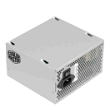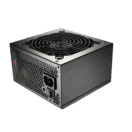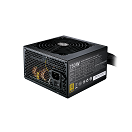Power supply failures
PC Power Supply Unit issues may cause the following symptoms.
- Failure to turn on
- Brief startup followed by automatic shutdown
- Starting up to the login screen and then shutting down
- It starts up normally but turns off after a while
- Freezing or getting stuck on the Windows icon
- Being slow, unresponsive or frozen
- Going to a blue screen intermittently
- It works fine until running a demanding task such as a game
- Experiencing random restarts or shutdowns without warning
- Hearing loud noises or detecting a burning smell or smoke
- Certain parts of the PC are not functioning properly (e.g. USB ports, graphics card, hard drive)
While these symptoms can indicate PSU problems, they can also be related to other hardware or software issues. When diagnosing computer problems, it’s important to consider all possible causes and perform a thorough diagnostic check. For optimal performance, investing in a high-quality PSU can make a significant difference, even if it means spending more than $50. If you’ve built your own PC, you can calculate Power Supply power to determine the optimal power required.
Power Supply Selection and Troubleshooting
Choosing power adapters for laptops and Mac
Mac laptops can also experience power issues. Avoid replacing expensive Mac power supplies with a cheaper alternative, such as a 85W with 45W power supply. You can use an 85W Mac power supply instead of a 45W one. For any laptop, power supplies can be swapped with another of the same or higher current in amps. For example, you can use an 18V 3 Amp PSU to replace an 18V 2 Amp PSU. However, it’s important to avoid using a PSU with a higher voltage rating, such as 18V with 19V, as this can damage the laptop and lead to further problems.
Power Supply Failure: A Case Study in PC Gaming
A PC with an 850-watt power supply and ROG Strix GeForce GTX 1080Ti gaming graphics card was shutting down indefinitely during the game PUBG (on Steam) in Windows 10, with or without a blue screen, and various errors were occurring. When the graphics card was removed or replaced with a different one, the PC worked fine during the game. Before concluding that it was a hardware issue, different drivers were tried, including original Asus, default Microsoft, or NVidia oldest or latest, with or without additional Asus software (such as Aura RGB Lighting), AI suite, etc. and Windows was clean booted, but nothing helped until the PSU was replaced. The 650-watt replacement was successful and was half the price of the original PSU.
Calculating PSU power
The power supply unit (PSU) is the heart of a computer system, supplying the necessary electricity to all components. To determine the power of the PSU, sum up the Thermal Design Power (TDP) of all components.
Estimated power consumption range for major components in a consumer PC
- GPU: 120–700W (RTX 4090 )
- CPU: 35–170W (i9-14900K and Ryzen 9 7950X)
- Chipset: 5–30W
- RAM: 1–10W
- SSD/HDD: 2–10W
- Motherboard: 10–50W
- Fans: 1–5W
- Power supply (self-use): 5–30W
PSU for office PCs
The most demanding are CPU and GPU. Considering that the CPU TDP range is from 50W to 80W and the GPU range is from 50W to 250W, allowing for the motherboard and SSD at around 100W, a 500W power supply is sufficient for most office and mid-range gaming computers.
PSU for gaming
However, for high-end gaming setups, power requirements significantly increase. Components like the Nvidia GeForce RTX 4090 ($3000) TDP 450W and Intel’s i9-12900 ($700) TDP 125W, alongside a high-end motherboard, can push the power requirement above 700W. PSU over 1000W may be required when using two or more GPU cards. Notably, the PSU’s capacity shouldn’t merely match this total TDP; it should exceed it by an overhead of 20-30% to ensure system stability and account for potential upgrades.
Other PSU requirements
In addition to the power, there are several other specifications to consider when choosing a Power Supply Unit for your computer:
Efficiency: The efficiency of a PSU is the amount of power it can convert from the power outlet to the power your computer can use. It’s usually expressed as a percentage. For example, if a PSU has an efficiency rating of 80%, it can convert 80% of the power from the outlet, while 20% is lost as heat.
Rails: Some power supplies split their total output across multiple rails, each delivering a fraction of the PSU’s total capacity. Single-rail PSUs provide all their power on one rail. For most users, using a single or multi-rail PSU is preferred.
Modularity: Modular PSUs allow you to remove unnecessary cables from the unit, freeing up space and improving airflow inside your PC. Non-modular PSUs permanently attach all the cables, making them harder to manage. Semi-modular PSUs offer a compromise between the two, with some wires permanently attached and others removable.
Connections: Make sure the PSU has the connectors you need. For example, if you install a high-end graphics card, you might need additional PCIe power connectors. If you’re building a server, you might need extra SATA or Molex connectors for drives.
On the other hand, connections reduce reliability and may add fluctuations in power. Hence, less number of adapters and extenders is better. Ideally, cables should come from the PSU without sockets and terminate with the plug you need without adapters.
Size: PSUs come in different sizes and form factors. The most common form factor is ATX, but if you’re building a small form factor PC, you might need a smaller PSU. Make sure the PSU will fit in your case.
Warranty: A longer warranty can signify a manufacturer’s confidence in their product. Also, consider the reputation of the brand. Look for brands that are known for quality and reliability.
The PSU is a critical part of your system. A faulty or poor-quality PSU can lead to system instability or even damage components. Always invest in a good-quality PSU from a reputable manufacturer.
Computer power supply prices
Here is the list of power supplies that Manly Electronics keeps for computer repairs and assembly. Please note that these parts are not for sale without the accompanying service.
| PSU | power | price |
|---|---|---|
 | 420 watts | $50 |
 RS-500 RS-500 | 500 watt | $70 |
 MWE-750 MWE-750 | 750 watt | $130 |
 MasterWatt Lite MasterWatt Lite | 600 Watt | $80 |
| 500 Watt | $70 |
Installing an Uninterruptible Power Supply
 Protect your computer and data by investing in an uninterruptible power supply (UPS). It shields your system from voltage spikes, offering up to 30 minutes of backup power during outages. Many UPS can automatically shut down your computer in your absence. Typically, an office computer requires a minimum of 500W UPS from $100 to sustain an office computer for a 10-minute blackout.
Protect your computer and data by investing in an uninterruptible power supply (UPS). It shields your system from voltage spikes, offering up to 30 minutes of backup power during outages. Many UPS can automatically shut down your computer in your absence. Typically, an office computer requires a minimum of 500W UPS from $100 to sustain an office computer for a 10-minute blackout.